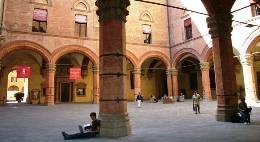This website uses cookies so that we can provide you with the best user experience possible. Cookie information is stored in your browser and performs functions such as recognising you when you return to our website and helping our team to understand which sections of the website you find most interesting and useful.


 Italian universities follow generally accepted tertiary education standards. Accordingly they offer courses towards bachelors, 1- and 2-year masters degrees, and doctorates. Other specialization schools provided advanced knowledge to those already with second-level degrees, while refresher courses aptly named corso di perfezionamento enable professionals to top-up their knowledge.
Italian universities follow generally accepted tertiary education standards. Accordingly they offer courses towards bachelors, 1- and 2-year masters degrees, and doctorates. Other specialization schools provided advanced knowledge to those already with second-level degrees, while refresher courses aptly named corso di perfezionamento enable professionals to top-up their knowledge.